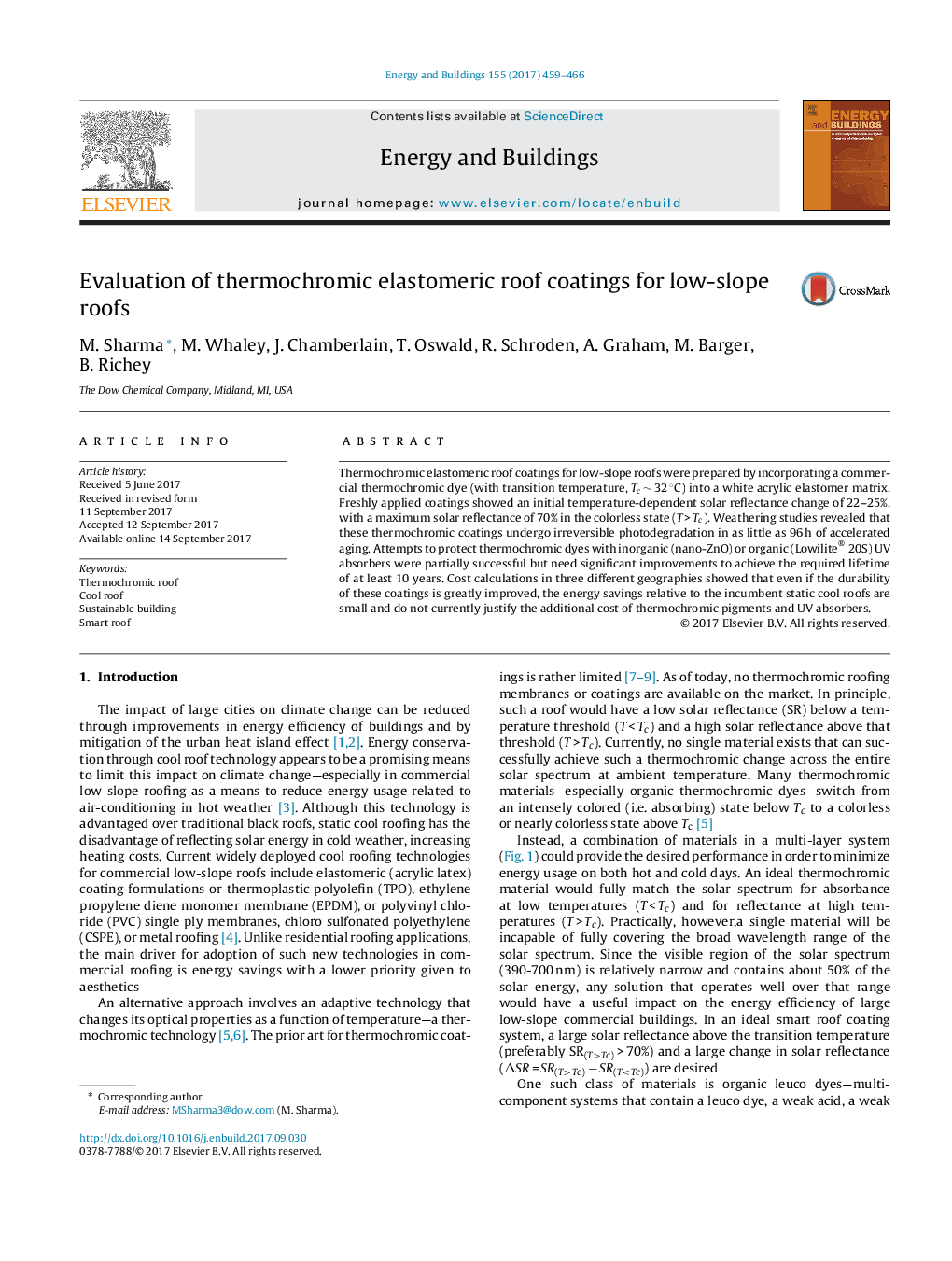| Article ID | Journal | Published Year | Pages | File Type |
|---|---|---|---|---|
| 4918873 | Energy and Buildings | 2017 | 8 Pages |
Abstract
Thermochromic elastomeric roof coatings for low-slope roofs were prepared by incorporating a commercial thermochromic dye (with transition temperature, Tc â¼Â 32 °C) into a white acrylic elastomer matrix. Freshly applied coatings showed an initial temperature-dependent solar reflectance change of 22-25%, with a maximum solar reflectance of 70% in the colorless state (T > Tc). Weathering studies revealed that these thermochromic coatings undergo irreversible photodegradation in as little as 96 h of accelerated aging. Attempts to protect thermochromic dyes with inorganic (nano-ZnO) or organic (Lowilite® 20S) UV absorbers were partially successful but need significant improvements to achieve the required lifetime of at least 10 years. Cost calculations in three different geographies showed that even if the durability of these coatings is greatly improved, the energy savings relative to the incumbent static cool roofs are small and do not currently justify the additional cost of thermochromic pigments and UV absorbers.
Keywords
Related Topics
Physical Sciences and Engineering
Energy
Renewable Energy, Sustainability and the Environment
Authors
M. Sharma, M. Whaley, J. Chamberlain, T. Oswald, R. Schroden, A. Graham, M. Barger, B. Richey,
